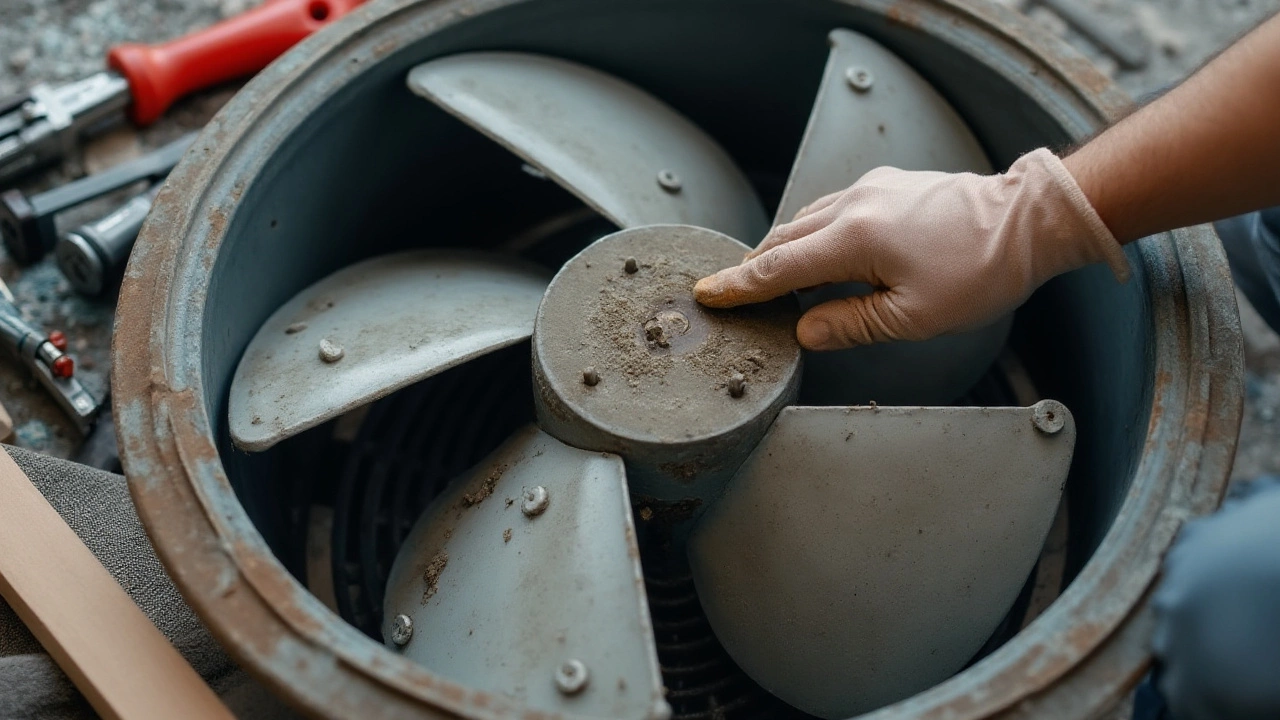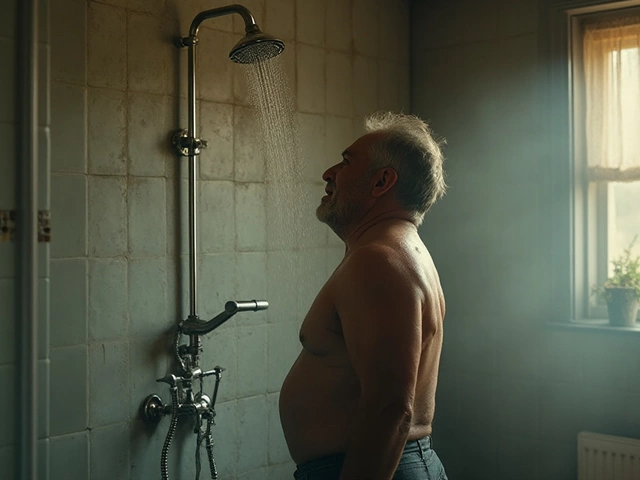Extractor fans play an essential role in our homes and workplaces, quietly ensuring that our indoor air remains clean and free from excess moisture. These devices, though often unnoticed, are champions of ventilation, providing a healthier environment by whisking away odors and preventing the buildup of mold.
But what happens when your trusty extractor fan starts acting up? Is it a job for the superhero in the form of an electrician? Or is it a task better suited for a DIY enthusiast with a basic toolkit? In this discussion, we uncover the answer and delve into the fascinating world of extractor fan repair, from the expertise electricians bring to the subtle signs indicating when your fan is in need of a little TLC.
- Understanding Extractor Fans
- Common Issues with Extractor Fans
- Role of an Electrician in Fan Repair
- DIY Fixes vs. Professional Repair
- Signs Your Extractor Fan Needs Fixing
- Tips for Maintaining Your Extractor Fan
Understanding Extractor Fans
Extractor fans, often nestled quietly in kitchens and bathrooms, serve as the unseen sentinels of indoor air quality. By design, these fans help remove unwanted odors, excess moisture, and even harmful airborne pollutants. They're essential in preventing dampness-related issues such as mold growth, which can be a silent invader compromising health and home structure. But what exactly goes into making these fans so efficient at their job? Let's peel back the cover and take a closer look.
The typical extractor fan comprises several key components: the electric motor, fan blades, housing, and ducts. The motor is essential as it drives the fan blades to rotate, forcing air to move swiftly from the room and out through the ducts. The fan housing is designed to minimize noise, an important feature considering these devices often run in the background for extended periods. Within the fan's intricate setup, filters may also be present, especially in kitchen extractor fans, to capture grease and other particles.
Technological advancements have introduced various types of extractor fans suitable for different settings and needs. Some are fitted with sensors that activate the fan when a certain humidity level is detected, while others may include timer functions to conserve energy. A ventilation system designed for a home kitchen might differ greatly from one in a commercial setting, reflecting the differing demands for airflow efficiency and durability. These nuanced differences underscore the importance of choosing the right fan for the right environment.
"Good indoor air quality is essential for comfort and health," notes a representative from a renowned home improvement magazine. "Extractor fans are a practical solution in ensuring that household environments remain fresh and safe from potential pollutants."
Types of Extractor Fans
Several types of extractor fans are available, each suited to specific needs. Axial fans are most common in domestic settings, designed for short duct runs, delivering high volumes of air at low pressures. For more complex setups, such as those requiring long duct runs, centrifugal fans offer a more powerful solution, albeit often at the cost of increased energy use and noise levels. Inline fans, another variant, are installed within ducting itself, often used when installing a fan directly on a wall or ceiling isn't feasible.
The evolution of smart home technology has also touched upon extractor fans. Many now come equipped with smart home integration capabilities, allowing homeowners to control their fans remotely or program them according to personalized schedules. This flexibility provides not only convenience but also energy efficiency boosts. Understanding the capabilities and options available is crucial for making informed choices about the maintenance and potential repair of these products.
| Type | Best For | Features |
|---|---|---|
| Axial Fans | Short duct runs | High air volume, economical |
| Centrifugal Fans | Long duct runs | High pressure, more powerful |
| Inline Fans | Hidden installations | Discrete, versatile |
Equipped with this basic understanding of extractor fans, we can better appreciate the challenges and intricacies involved in their repair and maintenance. Whether it's a swanky new model or a tried-and-true classic, each fan represents a unique engineering solution to an age-old problem: keeping the air we breathe both clean and fresh.
Common Issues with Extractor Fans
Extractor fans, often nestled in our bathrooms and kitchens, work quietly and tirelessly to maintain a fresh and healthy environment. But like all hard-working devices, they have their breaking points and can succumb to various issues over time. One of the most common problems is a simple power failure. This can happen when the fan is not receiving electricity due to a tripped circuit breaker or a blown fuse. In such situations, checking your electrical panel might reveal easy fixes that do not require professional help. However, if you find frequent outages, it might be an indicator of a larger electrical problem, where calling an electrician becomes necessary.
Another prevalent issue is the buildup of dirt and debris on the fan blades, which can cause it to operate inefficiently or even stop altogether. Dust accumulation over time is inevitable, especially in kitchen extractor fans exposed to grease and smoke. Regular cleaning can mitigate this problem, but neglecting it can lead to motor strain and eventual burnout. Sometimes an unpleasant noise emanating from the fan hints at this problem, as debris can cause the fan blades to be unbalanced. Performing regular maintenance checks can prevent such disruptions.
Over time, extractor fans might also suffer from worn-out or damaged components. This includes everything from the motor, which may overheat due to prolonged use, to smaller parts like fan belts or washers that may need replacement. A fan struggling to function optimally might make unusual loud noises or vibrations. Another sign could be diminished suction power, where the fan fails to extract air at the usual efficiency. During routine inspections, worn components can be diagnosed and replaced, often by a professional, to restore the fan’s functionality.
A less obvious, yet significant issue is improper installation, especially in homes where fans were added post-construction. Incorrect fitting can lead to poor performance, noise issues, or even damage over time. A well-installed fan should integrate seamlessly into your space, minimizing rattling and ensuring efficient air movement. Moreover, without a correct seal against walls or ceilings, conditioned air might leak, counteracting your heating or cooling efforts. Enlisting an electrician skilled in ventilation systems can ensure your extractor fan is set up correctly, maximizing its potential and longevity.
In certain cases, the location of the fan can also pose issues. Installing a fan in an area that’s too large or too humid may demand more from the system than it can handle, leading to premature wear and tear. Similarly, a fan that’s too powerful for a small space can create excess noise and unnecessarily high energy use. It's crucial to match the fan to the space it serves, both in capacity and placement, for optimal performance. Ventilation system design should consider these factors to ensure longevity and effectiveness, thus mitigating common extractor fan problems before they manifest.
Exploring the diverse challenges faced by extractor fans, one should not underestimate the impact these devices have on indoor air quality and comfort. Whether it is a simple cleaning job or a complex motor replacement, addressing the fan's issues promptly can save one from bigger challenges later on. As one industry expert notes,
"Regular maintenance and timely intervention are key in avoiding compounded electrical failures and ensuring a long life for your extractor fans,"reminding us the true value in keeping these essential comforts in perfect working order.

Role of an Electrician in Fan Repair
The task of repairing an extractor fan might not always seem straightforward to most, but for a seasoned electrician, it revolves around precision work and a good understanding of electrical systems. Electricians are trained to diagnose and resolve a wide range of issues that might cause your extractor fan to falter. When fans stop working due to electrical faults, an electrician is adept at tackling issues like faulty wiring, which can lead to short circuits or complete electrical failure. They ensure that connections are safe and compliant with safety standards, shielding your home from further trouble.
Electricians don the hat of a troubleshooter. Using diagnostic tools, they can test power supplies and identify whether a lack of power is due to the fan itself or an external source. Often, fans stop functioning due to motor failure or issues with the fan blade assembly. These components can wear out with continued use, and replacing or fixing them requires specific tools and skills. Here, electricians play an indispensable role, leveraging their expertise to get the fan up and running efficiently. Electricians also possess the know-how to handle ventilation system specifications, making them well-suited for integrating new fans if the old ones are beyond repair.
Insights from professionals highlight how technical efficiency is crucial in fan repair. As noted by the National Electrical Contractors Association, "Well-maintained electrical systems, inclusive of household appliances like extractor fans, not only mitigate risks but enhance overall functionality."
Richard Watts, a respected voice in home repairs, suggests that "skilled electricians go beyond basic repair; they enhance the longevity and safety of your appliances, which is crucial in areas like kitchens and bathrooms where extractor fans are most often used."
When it comes to extractor fans, electricians are responsible for ensuring that your fan not only works but operates quietly and effectively. This might involve adjusting tension belts or ensuring that the fan housing is secure and mounted correctly. Electricians are also responsible for identifying any underlying issues, such as less obvious mechanical defects or signs of wear, which can go unnoticed but affect fan performance. By addressing these, an electrician can help homeowners avoid abrupt fan failures and potential hazards of neglect.
The assistance of an electrician is fundamental when home ventilation issues arise because they bring safety insights that are often overlooked. It's not just about getting the fan working again. It's about ensuring that it's configured safely, and that airflow systems are optimized to reduce humidity and odor, which is critical in maintaining indoor air quality.
In some cases, electricians might advise on preventive measures or upgrades, suggesting new models that could improve energy efficiency. According to recent statistics, energy-efficient fans can reduce power consumption by 15% to 50% compared to older units. This insight is invaluable for homeowners looking to balance functionality with their electricity budget. Indeed, certifications and future-proofing advice are part of their tailored approach to every home's unique needs, allowing homeowners to build safer and more effective ventilation setups for the long haul.
DIY Fixes vs. Professional Repair
When it comes to repairing an extractor fan, the debate between tackling it yourself or hiring a professional can be quite engaging. On one hand, DIY fixes offer the allure of saving money and the satisfaction of solving a problem with your own hands. Many homeowners take pride in their ability to handle small-scale repairs around the house, seeing it as both a challenge and a learning opportunity. With the right tools and a bit of research, you might feel confident enough to give it a try.
Extractor fan issues can sometimes be attributed to minor problems such as dirty filters, loose connections, or buildup of debris. These are typically straightforward fixes, often requiring just some basic cleaning or a simple tightening of screws. Many DIY enthusiasts start by checking the fan’s power supply, making sure it’s properly connected and functional. A quick replacement of a worn-out fuse or realignment of a fan blade might be all it takes to get things spinning smoothly again.
When to Call the Professionals
On the flip side, some situations demand the expertise of a licensed electrician. For instance, if the fan has electrical faults, such as frequent tripping of breakers or unusual noises indicating internal motor issues, these are red flags best left to the professionals. Electricians have the testing equipment to diagnose such problems accurately and safely. Moreover, they possess the necessary certifications to ensure that any repair or installation meets local safety standards. Projects dealing with electricity always carry an inherent risk, so when in doubt, it’s wise to let experienced hands take over.
A particularly compelling case for hiring a professional is when you need to replace an extractor fan entirely. Although it might seem like just a swap out, new installations often require new wiring or alterations to ducts, which should comply with proper safety regulations. An electrician's knowledge becomes invaluable here, ensuring that not only is your new fan installed correctly, but it also operates efficiently and safely. As the energy consumption of household appliances continues to grow, professional installation might even save on future electricity bills by ensuring optimum fan performance.
According to the National Electrical Contractors Association, 'Incorrect DIY repairs not only risk safety but can lead to further damage, costing more in the long run.'
While going the DIY route can be useful for simpler repairs, there’s a lot to consider. Safety should be your number one priority. Research thoroughly, equip yourself with the correct tools, and recognize the limitations of what can be safely achieved without professional intervention. Sometimes, making the right call might mean placing trust in a skilled electrician to take the lead.

Signs Your Extractor Fan Needs Fixing
Extractor fans, often tucked away in silent corners of your kitchen or bathroom, are easy to overlook—until they stop working properly. So how can you tell when it's time to call in an electrician for fan repair? One of the most obvious signs is an unexpected increase in noise levels. If your extractor fan begins to produce a loud buzzing or grinding noise, it’s signaling a problem. This might be due to worn-out bearings or debris lodged in the blades, indicating that professional intervention might be needed to avoid further damage.
Another clear indicator of trouble is reduced performance. If you notice a lingering odor or persistent moisture that refuses to dissipate as it once did, your extractor fan may not be operating at full capacity. This can be a result of blocked filters, an electrical issue, or wear and tear over time. Sometimes, the fan may struggle to start, stopping and starting irregularly, which can point to electrical faults needing the expertise of a seasoned technician.
In some cases, physical damage is the culprit. A visual inspection can sometimes reveal cracks in the fan housing or broken blades. These physical signs not only reduce efficiency but can also cause safety concerns if the fan continues to operate in this state. It’s recommended to address these issues promptly to prevent any potential hazards.
"Ignoring early warning signs can lead to bigger problems down the road, as small issues often escalate into larger repairs," advises Home Improvement Magazine.
Lastly, an overlooked yet significant sign is the fan’s age. As extractor fans age, their components wear out, leading to frequent malfunctions or inefficiencies. Typically, if your fan is more than ten years old, it might be time to consider not just repair but possibly a replacement to benefit from newer technology that offers better performance and energy efficiency.
Here’s a quick reference table to identify issues:
| Sign | Possible Cause |
|---|---|
| Noisy Operation | Worn Bearings/Debris |
| Reduced Performance | Blocked Filters/Electrical Issues |
| Irregular Operation | Electrical Faults |
| Physical Damage | Cracked Housing/Broken Blades |
| Fan's Age | Routine Wear and Tear |
By monitoring these signs, you can maintain the health of your ventilation system and ensure your indoor environment remains fresh and comfortable. Keeping an eye on these indicators gives you a head start in troubleshooting and repairing your ventilation system effectively.
Tips for Maintaining Your Extractor Fan
Maintaining your extractor fan is less about taking drastic measures and more about consistency. Firstly, let's talk about cleaning, which is the backbone of any good maintenance routine. Dust and grease accumulate over time, especially if your fan is installed in the kitchen. This not only reduces the fan's efficiency but also poses a fire hazard. To tackle this, unplug your fan and carefully remove the cover and filters. Using warm soapy water and a scrub brush, gently clean the build-up from these parts. Remember to let them dry completely before putting them back. By cleaning once every three months, you greatly prolong the life of your fan, keeping it in prime condition.
An essential part of keeping your extractor fan working efficiently lies in regular inspections. You don't need to be an expert to spot some common issues. For instance, listen to the sound your fan makes during operation. A change in the hum, be it louder or more rattling than usual, could indicate that something is off. Check for any loose screws or parts that might need tightening. Ensure that the wiring is intact and that there’s no visible damage. If you're ever uncertain, consulting a professional electrician for an expert look at your fan ensures peace of mind.
"Routine ventilation fan maintenance not only extends the equipment's life but also maintains indoor air quality and energy efficiency," asserted Jane White, a ventilation system specialist at GreenAir Solutions.
Now, let us not forget the pivotal role of the vent itself. The ducting system is where the extracted air travels, and it can easily get clogged or develop blockages. Periodically check this ductwork to make sure it is free from obstructions, such as birds' nests or debris, which not only impede air flow but can also cause damage to the system. It's wise to conduct these checks during seasonal transitions, since weather changes often bring about environmental shifts that affect ventilation systems.
For homes equipped with multiple extractor fans, especially in buildings sharing communal ventilation like apartments, it’s crucial to keep a consistent schedule across all units. Using a small notebook or digital reminders can assist in keeping track of maintenance dates and any observations made during inspections. Also, if you're someone who appreciates numbers, here's an amazing tidbit: Proper maintenance of extractor fans can improve their efficiency by up to 30%. Good habits don't just save money in avoided repairs; they help the environment by reducing unnecessary electricity usage.
Finally, always consider the environment where your extractor fan operates. In humid areas like bathrooms, consider running the fan a bit longer after a shower to ensure all moisture is removed. For those installed in living areas exposed to cooking fumes, turning the fan on during meal prep can prevent grease accumulation from the start. Each fan fulfills a distinct role, so tailor your maintenance to its specific function, and your fan will surely serve you diligently for years to come.







